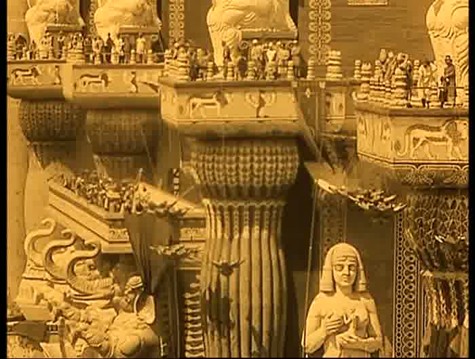Directed by:
D.W. GriffithCinematography:
G.W. BitzerComposer:
Carl DavisCast:
Lillian Gish, Mae Marsh, Robert Harron, Sam De Grasse, Vera Lewis, Mary Alden, Elmo Lincoln, Olga Grey, Erich von Stroheim, Eugene Pallette, Wallace Reid (more)Plots(1)
After shaking the world with his hugely controversial epic The Birth of a Nation, pioneer filmmaker D.W. Griffith spared no expense in putting together his next project, Intolerance (Love’s struggle throughout the ages): a powerful examination of intolerance as it has persisted throughout civilisation, set across four parallel storylines that span 2500 years. There is the Babylonian story, depicting nothing less than the fall of Babylon; the Judean story, which revolves around the crucifixion of Christ; the French story, which presents the St. Bartholomew's Day Massacre in all its horror; and a modern American story of class struggle, crime, and the plight of life in the early 20th century set within urban slums and the prison system. (Eureka Entertainment)
(more)Reviews (2)
The cradle of intolerance, futility, and destruction is a classic Griffith epic that conjures art on every time plane. Yet if I were to choose one epoch in which I would like to spend more than three hours, it would undoubtedly be the Babylonian epoch of 539 BC.
()
Symbolism is certainly nothing new in film; after all, one of the pioneers of cinema, Georges Méliès, was the one who introduced this element. However, it was D. W. Griffith, who has perfected it. The conclusion of his brilliantly controversial epic The Birth of a Nation was proof of that, and the film Intolerance continues in that vein, with the woman rocking the cradle being a beautiful example of such film metaphor. No matter what happens, life goes on. Even when people are nasty to each other, they still have hope. Absolutely captivating is the storytelling format, alternating between four different stories, which was also why the film was too demanding for audiences of that time. The skipping between stories was confusing. Let's face it, audiences have a problem with that style of storytelling even today. However, D. W. Griffith once again showed his genius and ability to play with the young medium that film was. What is done with the camera, the editing, the narration, and also with the effects are elements that are still valid to this day. By the way, even the intertitles impress with their sophistication, just like the exposed breasts, which later certainly weren't commonplace. The fidelity in capturing historical periods in historical stories is truly breathtaking.
()

